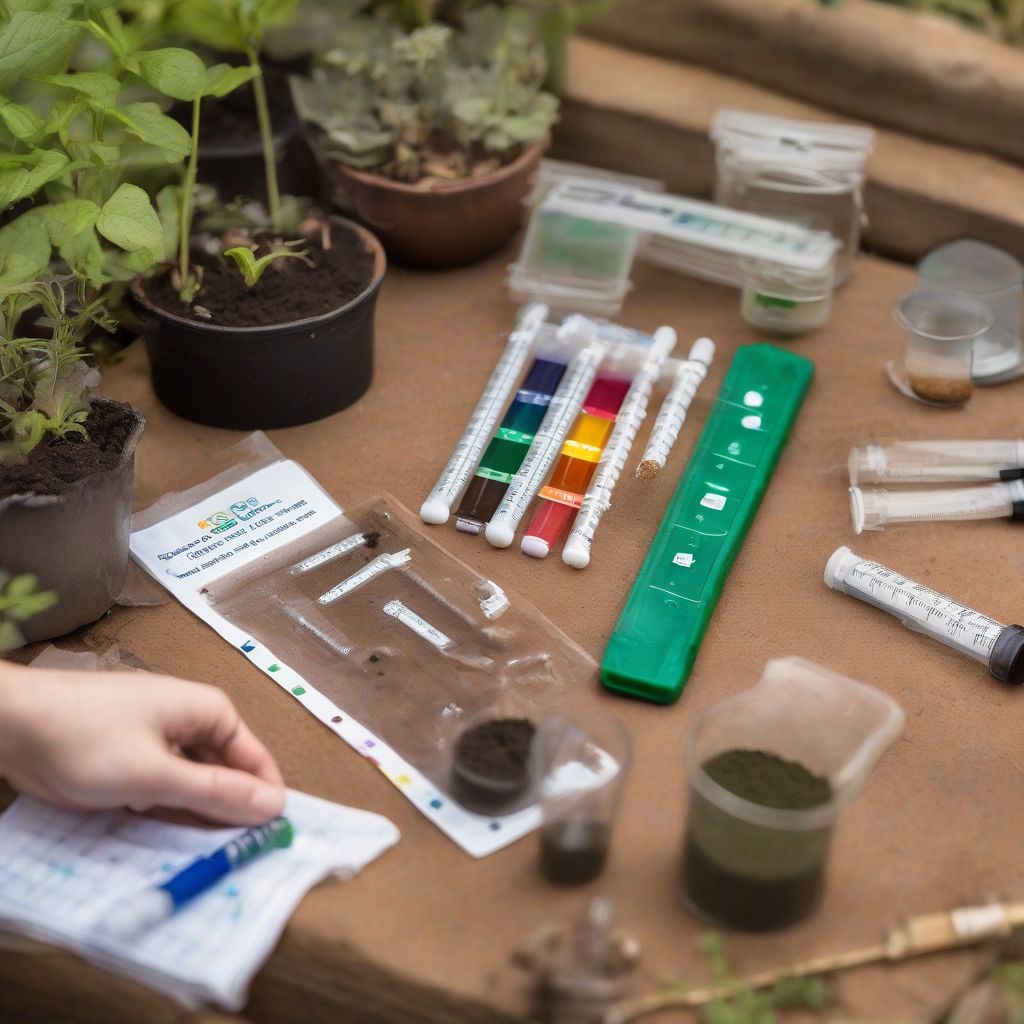Imagine biting into a juicy tomato, bursting with flavor, picked fresh from your thriving garden. The secret to such bounty? Healthy soil, and a key aspect of soil health lies in its pH balance. This comprehensive guide dives deep into how to test and balance soil pH organically, empowering you to create a vibrant ecosystem for your plants to flourish.
Understanding Soil pH
Soil pH measures the acidity or alkalinity of your soil on a scale of 0 to 14. A pH of 7 is neutral, below 7 is acidic, and above 7 is alkaline. Why does this matter? Soil pH directly impacts nutrient availability. Most plants thrive in slightly acidic soil (pH 6.0-7.0) because essential nutrients are readily absorbed in this range. Extreme pH levels can lock out vital nutrients, leading to stunted growth and nutrient deficiencies.
Testing Your Soil pH
Before making any adjustments, you need to know your starting point. There are several ways to test soil pH organically:
DIY Vinegar and Baking Soda Test
This quick method gives a general indication of your soil’s acidity or alkalinity. Add vinegar to a soil sample; fizzing indicates alkaline soil. Add baking soda to a different sample; fizzing indicates acidic soil. While not precise, this test helps identify extreme pH imbalances.
DIY Red Cabbage pH Test
Boil red cabbage and use the resulting purple liquid as a pH indicator. Add your soil sample to the liquid; color changes will indicate acidity or alkalinity. Pink/red suggests acidic, purple/blue suggests neutral, and greenish-yellow suggests alkaline.
Home Soil Test Kits
These kits provide more accurate readings. Follow the kit’s instructions for collecting and testing your soil sample. These kits often offer a numerical pH reading, giving you a clearer understanding of your soil’s condition.
Professional Soil Testing
For the most comprehensive analysis, send a soil sample to a professional lab. They’ll provide a detailed report including pH, nutrient levels, and other important soil properties. This is especially beneficial for serious gardeners or those experiencing persistent plant problems.
 Testing soil pH with a kit
Testing soil pH with a kit
Balancing Soil pH Organically
Once you know your soil pH, you can take steps to adjust it organically:
Lowering pH (Making Soil More Acidic)
- Adding Organic Matter: Incorporating compost, well-rotted manure, or leaf mold improves soil structure and gradually lowers pH over time. “Compost is like a multivitamin for your soil,” says expert gardener, Sarah Jones.
- Elemental Sulfur: For faster results, use elemental sulfur. Soil microorganisms convert it to sulfuric acid, lowering pH. Follow product instructions carefully.
- Coffee Grounds: Used coffee grounds are slightly acidic and can contribute to pH reduction. Add them sparingly to avoid nitrogen imbalance.
- Aluminum Sulfate: This amendment quickly lowers pH but can be harsh on beneficial soil microbes. Use it cautiously and sparingly.
Raising pH (Making Soil More Alkaline)
- Lime: Agricultural lime (calcium carbonate) is the most common amendment for raising pH. Dolomitic lime also adds magnesium. Apply lime according to soil test recommendations.
- Wood Ash: Hardwood ash contains potassium and calcium carbonates, which can increase pH. Use it sparingly as excessive amounts can harm plants.
- Oyster Shells: Crushed oyster shells are a slow-release source of calcium carbonate, gradually raising pH and adding calcium to the soil.
Maintaining Balanced Soil pH
Balancing soil pH is an ongoing process. Regular testing and amendment applications are essential for long-term soil health.
Monitor Regularly: Test your soil pH annually or more frequently if you encounter plant problems.
Amend Gradually: Make small, incremental adjustments to avoid drastic changes that could stress your plants.
Choose the Right Plants: Consider your soil’s natural pH when selecting plants. Some plants tolerate a wider pH range than others. For example, blueberries thrive in acidic soil, while lavender prefers alkaline conditions.
Practice Crop Rotation: Rotating crops helps prevent nutrient depletion and maintain soil balance.
Optimizing Soil Health Beyond pH
While pH is crucial, other factors contribute to healthy soil:
Nutrient Levels: Ensure adequate levels of essential nutrients through organic fertilizers and compost.
Soil Structure: Improve soil structure by adding organic matter, which promotes aeration and drainage.
Beneficial Microbes: Foster a thriving soil ecosystem by incorporating compost and avoiding synthetic pesticides.
Conclusion: Nurturing Your Garden’s Foundation
Balancing soil pH organically is a vital step toward creating a thriving garden. By understanding your soil’s needs and implementing the appropriate techniques, you can unlock the full potential of your plants. Remember, healthy soil is the foundation of a healthy garden. Start testing, amend wisely, and watch your garden flourish! Now, share your experiences and questions in the comments below. What are your favorite organic soil amendment tips?



